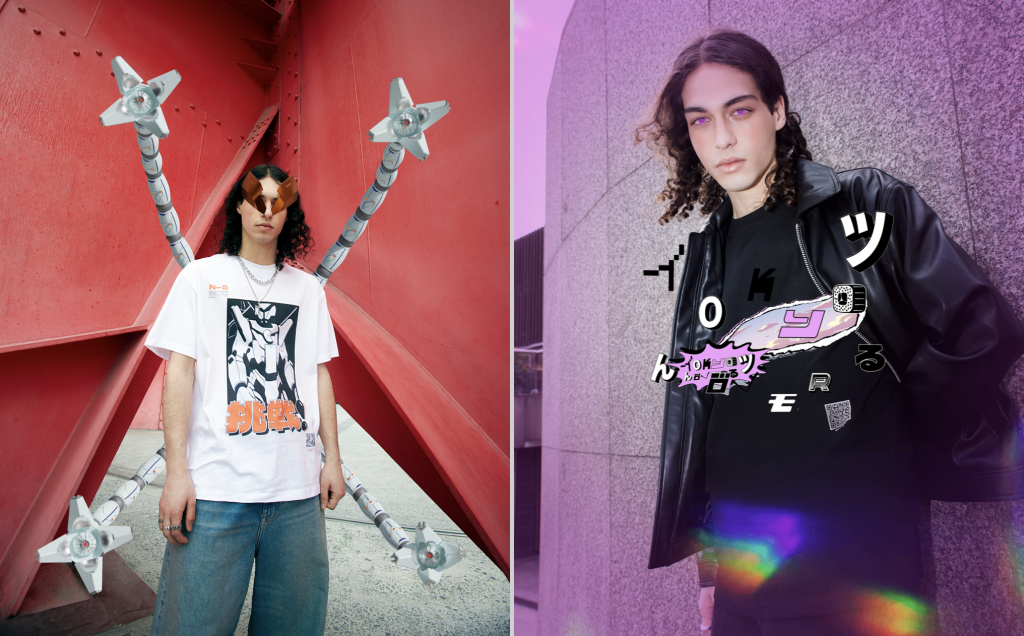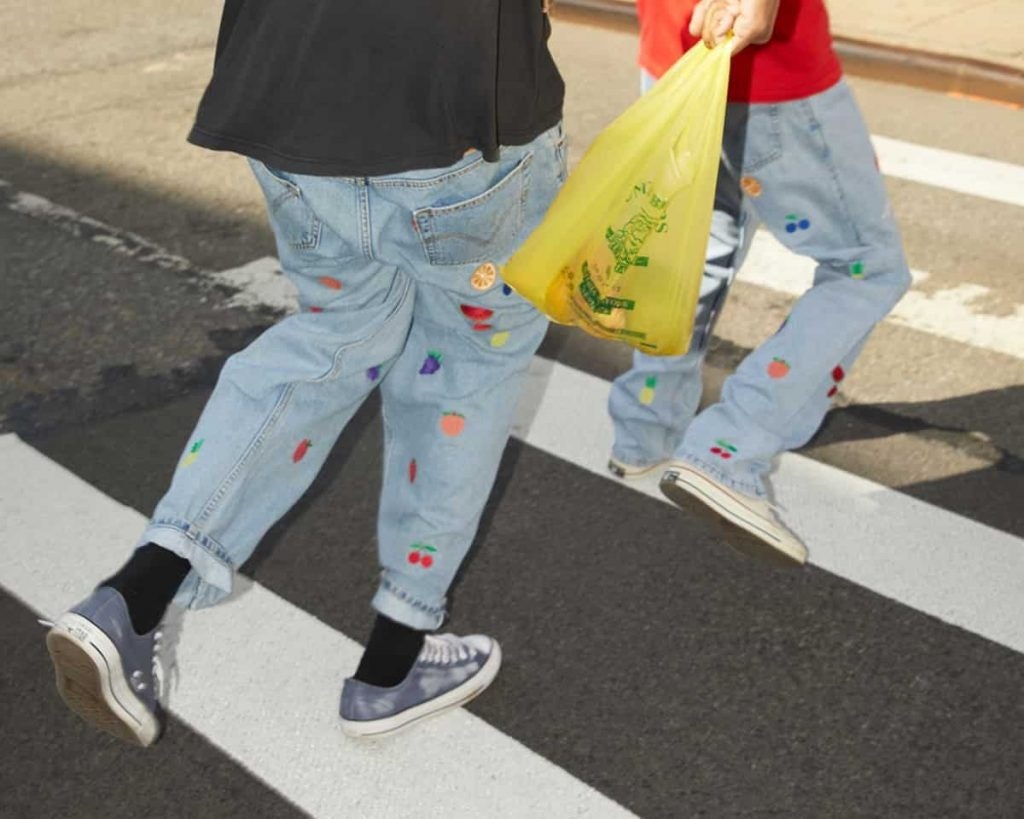Last year, fast fashion accounted for around eight to 10 percent of global carbon emissions and 20 percent of wastewater production (a byproduct of dyeing processes in garment manufacturing).
Yet, the industry has something else on its mind – the metaverse.
Fast fashion’s entry into the digital world poses the question; will the 106 billion segment harness the opportunity to start afresh in the new realm, or is it just devoting its resources to the metaverse over fixing its real world issues?
Inditex’s virtual integration#
Take Zara, for example. The retail giant – an Inditex subsidiary – launched its long-term metaverse initiative in 2021, and released its third collaborative capsule with Korean gaming platform Zepeto earlier this month. The project consisted of both digital and physical items, as was the case with the duo’s ‘Lime Glam’ and ‘Y2K’ phygital lines, which launched in April and October last year.
While the brand surges ahead with its metaverse collections, it continues to churn out more than 450 million clothing items via 20,000 new styles each year. The waste generated by Inditex in 2021 amounted to 20,400 tonnes, an increase of 10.4 percent over 2020.

Greenwashing 2.0#
Fast fashion’s foray into the Web3 world draws attention away from real-world issues, such as looming environmental ruination, and means brands are allocating resources to the virtual world that could otherwise be used to solve these challenges.
Greenwashing tactics have also had a virtual upgrade. The buzzword “metawashing” – coined last year by Simon Whitehouse, former CEO of sustainable consultancy Eco-Age – defines the process by which a brand spends more time puffing up its virtual product marketing and metaverse projects than minimizing its sustainability impact.
Bershka’s (also an Inditex business) second venture in the virtual space, rolled out earlier this month, aimed to champion the endless possibilities of a single garment when paired with augmented reality (AR) technology. Using an Instagram filter, users can embellish their physical clothes with digital overlays to jazz up their outfits, and their online personas.
The project claimed that its ‘semi-digital’ activation demonstrated how overconsumption can be decreased by the use of AR tech, ultimately reducing fast fashion purchases. However, the label's brick-and-mortar stores sell over 4,000 different products per year.
Meanwhile, critics cite that a lack of disclosure, or “greenhushing,” absolves companies from delivering on set-in-stone commitments. If the industry is to achieve any success in reducing its impact, more transparency is needed around Web3 activations.

The real deal?#
Another example is H&M’s tie-up with digital platform and sustainability advocate Institute of Digital Fashion last year, which was intended to shine the spotlight on the potential of digital fashion to create “a more sustainable and inclusive vision,” as quoted in the project’s press release.
“Working with global brands like H&M was from an educational standpoint, exploring how green can fast {fashion} really be,” Leanne Elliot Young, CEO and co-founder of Institute of Digital Fashion tells Jing Daily.
As part of H&M's ‘Innovation Metaverse Design Story’, the duo developed a five-piece digital fashion capsule collection. “It was an infrastructure change for the brand through digital transformation led by us. Investing in digital fashion is investing in more sustainable practices; we need a shift in process and in mindset in order to be able to fully shift towards a sustainable fashion industry,” Young continues.
The project, however, ran in conjunction with a physical clothing line. One of the items available was a bodycon dress produced using 94 percent polyester – a synthetic material which can take over multiple centuries to break down, sheds toxic microfibres, and emits up to three times more carbon emissions than cotton.
Responsible for producing 3 billion garments per year, recycling only around 10 percent of them, H&M remains one of the industry’s biggest polluters. It also recently got into hot water for issuing vague sustainability claims.
To date, fast fashion’s reluctance to quickly make major changes to its operating model suggests its presence in the metaverse is both performative, and lacks authenticity.

A different approach#
Some rising stars have cracked the code of creating something new while minimizing their environmental impact. Like Mntge, whose team source one-of-a-kind gems and connect them to both a near-field communication (NFC) chip and a digital NFT twin.
Using next-gen tech, the label extends the lifecycle of existing garments rather than creating new ones.
“We know it's hard for anything to ever be fully sustainable … That's why we're sourcing so much vintage. These brands have created phenomenal products that can stand the test of time. There's no need to make new products,” Sean Wotherspoon, co-founder of Mntge tells Jing Daily.
If being 100 percent eco-friendly isn’t viable, brands should still search for methods to minimize their environmental impact, Wotherspoon says.
“We’d love to see our brand reach the point where it’s 70 percent handpicked and organically sourced vintage and 30 percent new products using recycled materials. We want to cut down the need to produce new stuff,” he adds.
Fast fashion’s appeal is its global reach and low cost. That’s something most smaller labels can’t deliver on.
“We really want to touch those markets outside of the US. That's going to be a big thing for Mntge. Our growth in the future will be doing pop-ups and immersive events where we can bring people to our brand, let them experience it, and give them access to this great vintage,” Wotherspoon says.

On demand#
While Mntge’s model is unique, Web3 native labels such as Cult & Rain, 9dcc and RTFKT have adopted a made-to-order manufacturing system. It’s a strategy that decreases the amount of materials used in the garment production process and almost guarantees a zero-waste outcome.
Fast fashion brands, however, haven’t disclosed anything specific to made-to-order models with their own phygital collections, implying that these garments are produced in the same factories as their typical clothing lines.
In Bershka’s case, the only information provided by the brand on its waste reduction efforts is a short statement on its website, reading, “we will guarantee that all waste generated in our facilities (stores, logistics centers, central offices) is recycled or reused.”
Nor do Zara’s phygital collections with Zepeto display any information on where its physical counterparts are made.
A more radical solution to issues such as greenhushing would be for fast fashion to shelve its digital ambitions to focus on fixing its real-world challenges.


